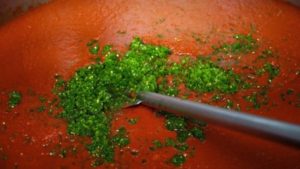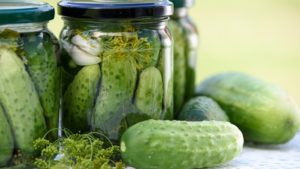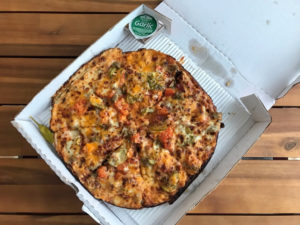Jala Jala is an Alabama Maker worth shouting about
By Tommy Black – Alabama Newscenter

Jala Jala Foods started with jalapeno jelly but has grown into multiple rubs and sauces featuring the jalapeño pepper. (Mark Sandlin / Alabama NewsCenter)
Being from Texas, Jay Short just assumed other folks loved jalapeño peppers as much as he did.
“Growing up in in the Dallas area, jalapeños were a way of life. My dad would serve them with every meal,” he says. “So I thought everybody ate them.”
These days, as the founder of Jala Jala Foods, Short is sharing his passion for peppers by bringing the enjoyable glow of fresh jalapeño salsas and jellies to customers across the Southeast.
“I moved to Huntsville to work as a manufacturing rep for an electronics company,” Short says. “I did that for a while, then went to chef’s school. I tried the restaurant world, but it wasn’t for me.”
One day, his fondness for jalapeños met a friend’s field of peppers – and a business was born. “In the summer of 2011 my friend Phil, who was also our church’s chef, came to me with a problem,” Short remembers. “He had a backyard garden full of jalapeños, and was trying to figure out what to do with them. I’d been making salsa for about 30 years, so I told him we should try that.”
As Short turned many of the jalapeños into homemade salsas, Phil created pepper jellies with the rest. “We made about 350 jars of salsas and jellies and sold them at our church,” Short says. “They were all gone by Christmas.”
The next summer the pair produced more than 1,500 jars of their handmade products – and sold out again. “So I thought maybe we should get into the food business,” Short says.
After coming up with various names for their company – “one was ‘Phil-apenos,’ but that kind of confused people as to what kind of food we were selling,” Short admits – they settled on Jala Jala (pronounced “hala hala”) Foods in 2013.
“We cooked at my home for a while, then used the church’s kitchen,” Short says. “But the business grew so much that in a couple of years we needed a bigger place. I found an industrial kitchen that had been used by a catering company, and it was perfect.”
Now, using mainly locally grown jalapeños, Short and a handful of other creative cooks turn out 12 types of salsas, jellies (flavored with blueberries, strawberries and blackberries), relishes, barbecue sauces and a chili mix.
“The mix is based on my grandfather’s 100-year-old chili recipe,” Short says. “He used to cook for crews in the Texas oil fields and they loved his chili.”
In addition to his products being sold on the company’s website, Short’s salsas and sauces are available at Whole Foods and Publix grocery stores across the South.
This spring, he traveled back to Texas to show off his goods at nine Central Market grocery stores. “It’s like going home, because that’s where it all started,” he says. “Texas is where I learned to love the taste of jalapeños. When prepared correctly, they’re delicious. That’s why our motto is ‘know the glow.’”
“With jalapeños it’s all about flavor, not heat,” Short says. “You get this glowing feeling when you eat them. And that’s what I want to share – that glow.”
The Product: Jalapeño salsas, pepper jellies, relishes, barbecue sauces and rubs, as well as Texas Red Chili Mix.
Take Home: A jar of Texacan Salsa (with a medium amount of jalapeño glow) $7.59.
Jala Jala Foods Inc., P.O. Box 14417, Huntsville AL 35815
www.jalajalafoods.com 256-880-0663







